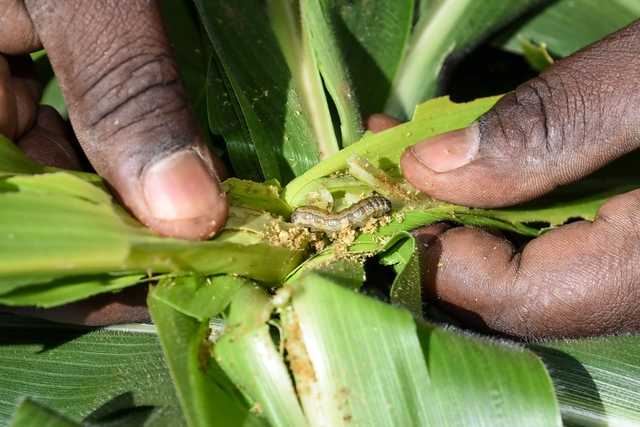Forecasting models target worm larvae
Friday April 22 2022
Maize plants infested with the fall armyworm. PHOTO | FILE | NMG
Farmers have yet another weapon in their fight against fall armyworm, which has for the last six years devastated maize crops on the continent.
In the latest development, the Centre for Agriculture and Bioscience International (CABI) has come up with forecasting models targeting fall armyworm larval stages.
Using real-time Earth observation data and pest occurrence within farmers’ fields, the models will alert farmers on the best timing for action against the armyworm in the fight against the pest’s development beyond the larval stage when it is most destructive.
Interventions by CABI-led Pest Risk Information Service (Prise) resulted in a reduced population of fall armyworm and an increase in maize harvest.
Real-time alerts
An international team, led by Alyssa Lowry, a data scientist at CABI, demonstrated this model as part of the Prise which provides real-time alerts via messaging to farmers, advising them when to act.
“The window of time over which early-stage larvae could be controlled is quite broad, and the models help to define the window when an intervention could be made if the pest is present, or when monitoring and scouting activities would be optimal,” said the team involved in the modelling study.
The novel modelling of early and later instar larval population emergence and development – in relation to physiological time from planting – now allows alerts to be sent to farmers in advance of an intervention/scouting time, allowing farmers to take preventative action as part of their Integrated Pest Management plans.
Lowry says, “The models do not require farmers to directly estimate action thresholds and can be easily improved upon in the future when data on action thresholds become available for Africa.
As the output of these models is a time for action, they can be used in conjunction with a variety of control methods such as biopesticides or for the timing of release of local or exotic instar-specific larval parasitoids.
“This type of modelling can easily be applied to other major insect pests of farmer crops in Africa and work is already well progressed on several other species within the Prise project.
Armyworms can consume areas as large as a football field in as few as two to three days.
